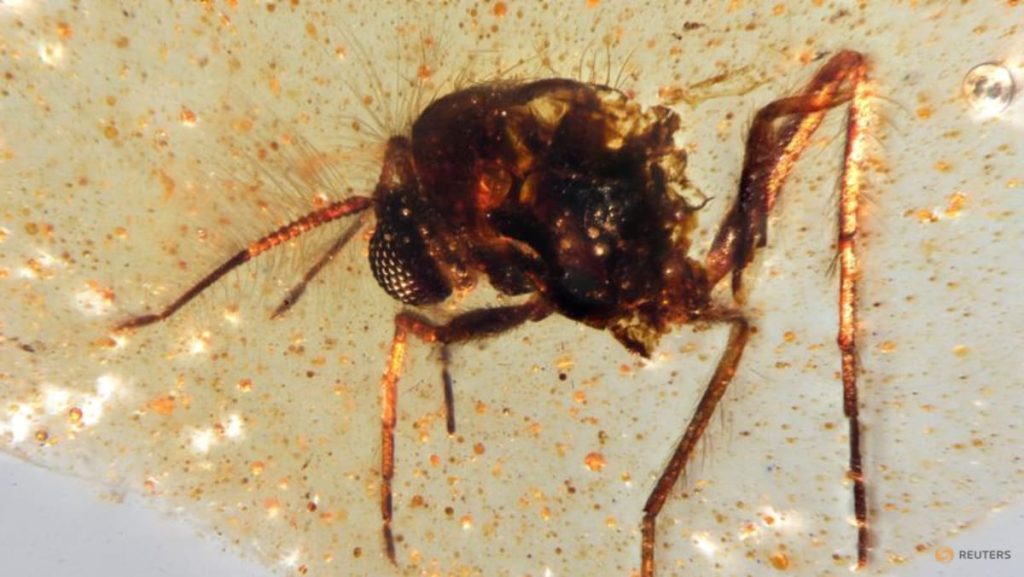WASHINGTON :Amber found in the Amazon forest region of Ecuador containing a trove of well-preserved fossils of wasps, midges, flies, beetles and other insects is giving a glimpse of a Cretaceous Period ecosystem in South America crawling with activity 112 million years ago during the age of dinosaurs.
Amber is fossilized tree resin. Sometimes amber is found with bioinclusions – animals, plants and fungi that got trapped in the sticky stuff before it hardened and eventually fossilized.
The pieces of amber unearthed by researchers in a quarry near the town of Archidona in Ecuador’s Napo Province contained bioinclusions of insects and even part of a spider’s web. Fossilized plant remains were found in sediment nearby.
Nearly all the major amber deposits found to date have been located in the Northern Hemisphere, and the Ecuador discovery represents the largest deposit of amber from the age of dinosaurs found to date in South America. The region was part of Gondwana, an expansive ancient landmass that eventually broke up into South America, Africa, Antarctica, Australia, the Arabian Peninsula and the Indian subcontinent.
“Finding a new site of this importance in the ancient continent of Gondwana provides very valuable information from a region where we previously had little data about the organisms that lived there,” said paleoentomologist Xavier Delclòs of the University of Barcelona, lead author of the study published in the journal Communications Earth & Environment.
The insects discovered in the amber included midges – the kind that bite and the kind that do not – as well as aphids, wasps, caddisflies and beetles, according to the researchers.
Based on an understanding of the ecology of similar insects alive today, those found in the amber provide insight into the ecosystem they inhabited, according to paleoentomologist and study co-author Mónica Solórzano Kraemer of the Senckenberg Research Institute in Frankfurt, Germany.
The biting midges, for instance, most likely fed on the blood of the dinosaurs that roamed the region at the time.
“Amber essentially preserves the exoskeletons of small organisms from the past. The preservation of these outer structures is so excellent that, under a microscope, they can look like freshly dead organisms, yet they are millions of years old,” Delclòs said.
“Resin is sticky and is produced by trees to block pathogens, so it traps anything living in or around the tree. Once exposed to air, the resin polymerizes and hardens, and if it is then buried in an oxygen-free environment for millions of years, it transforms into amber. Organisms without mineralized skeletons are rare in the fossil record, but amber preserves many of them in exceptional condition, like no other rock can,” Delclòs added.
The fossils date to an important time of transition in Earth’s flora, when flowering plants were becoming dominant. The fossilized remains of plants revealed some of the flora at the site at that time. The fossils indicated that flowering plants accounted for about 37 per cent of the flora.
Flowering plants, called angiosperms, are now the largest and most diverse plant group, comprising about 80 per cent of the world’s plants. They produce flowers and generate their seeds in fruits, and first appeared during the Cretaceous, the last chapter of the age of dinosaurs.
Their closest relatives are the gymnosperms, a group that preceded them on Earth and includes conifers and some others.
The discovery of the fossils in Ecuador “opens a window into how the transition from gymnosperm forests to today’s forests dominated by angiosperms took place,” Delclòs said.


